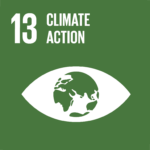Within one month, five tropical cyclones have entered the Philippine Area of Responsibility (PAR) with varying strengths from Severe Tropical Storm to Super Typhoons bringing along with them heavy to intense rainfall or strong to severe winds.
Manila, Philippines — The Philippines is reeling from an unprecedented surge of tropical cyclones, as Super Typhoon Man-Yi, known locally as Pepito, became the sixth typhoon to strike the country in just one month. Making landfall at 9:40 p.m. local time on Thursday, the powerful storm hit Catanduanes island with sustained wind speeds of 195 km/h (121 mph), prompting mass evacuations and warnings of catastrophic impacts.
RELEVANT SUSTAINABLE GOALS




Unprecedented Storm Surge and Heavy Rainfall
The state weather bureau has issued warnings of a “life-threatening storm surge,” with waves expected to reach up to 15 meters (49 feet) along eastern coastal areas. The typhoon is projected to bring more than 300 mm (11 inches) of rain to northern regions over the weekend, raising the risks of widespread flooding and landslides, particularly in areas already saturated from previous storms.
“We are terrified of the typhoon, as it may intensify and the waters can rise,” said Glenda Llamas, speaking from an evacuation center in Albay province. More than 400,000 people have been evacuated, with officials urging those in high-risk zones to comply with orders. Ariel Nepomuceno, head of the civil defense, highlighted the compounding risks: “The ground has been saturated by the consecutive typhoons, making landslide-prone areas even more dangerous.”
A Nation Under Siege by Consecutive Typhoons
The Philippines has faced an unrelenting series of storms over the past month, with Typhoon Man-Yi following five earlier cyclones, including Typhoon Usagi just days ago. The combined impact has been devastating, with at least 160 lives lost and widespread destruction across the country.
Tropical Storm Trami, Typhoon Kong-rey, and Typhoon Yinxing all struck in rapid succession, each bringing heavy rainfall, flooding, and fatalities. The storms have left millions displaced, thousands of homes destroyed, and critical infrastructure heavily damaged. Typhoon Usagi, which struck earlier this week, brought torrential rain and a three-meter storm surge, exacerbating the humanitarian crisis.
Catastrophic Damage to Agriculture and Infrastructure
The cumulative impact of these storms has wreaked havoc on agriculture and infrastructure. The National Disaster Risk Reduction and Management Council (NDRRMC) reports that over 207,000 homes have been damaged across 17 regions, while infrastructure damage is estimated at $179 million (PHP10.56 billion). Access to some areas remains restricted, with critical lifelines restored only temporarily ahead of Man-Yi’s arrival.
The agricultural sector, already vulnerable due to climate impacts, has borne the brunt of the damage. Losses are estimated at $119 million (PHP7 billion), with the Bicol region suffering significantly. In Camarines Sur province, more than 33,000 hectares of farmland were destroyed, affecting over 34,000 farmers and fisherfolk.
While typhoons are common in the Philippines, meteorologists are noting the unusual frequency and intensity of storms during November. Experts from the United Nations Intergovernmental Panel on Climate Change (IPCC) have warned that while the overall number of tropical cyclones may not increase due to global warming, storms are “very likely” to bring more intense rainfall and stronger winds, leading to higher proportions of super typhoons.
The ongoing crisis has left millions struggling to recover from one storm before the next arrives. Prolonged flooding and displacement have hindered communities from rebuilding, with damage assessments still incomplete. Efforts to restore livelihoods in affected areas, especially for farmers and fisherfolk, remain a priority for the government and aid organizations. With typhoon season far from over, the Philippines stands as a stark reminder of the escalating human and economic toll of climate-driven disasters.
Lead image courtesy of Изображения пользователя Евгений Баранов (illustration : Eye of the Hurricane. Hurricane on a Black Background. Typhoon over Planet Earth. Category 5 Super Typhoon Views from Outer Space. Elements of This Image Furnished by NASA.
You may also be interested in :
Typhoon Yagi Devastates Southeast Asia, Affecting Nearly 6 Million Children





